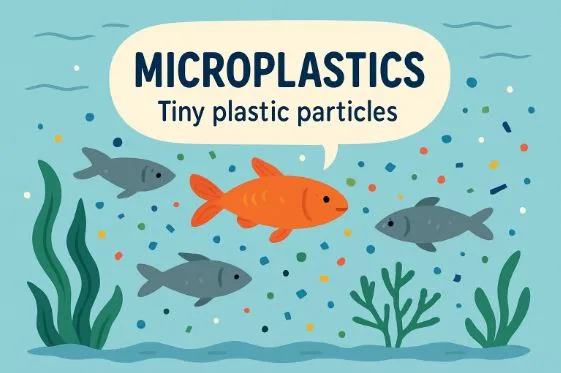How Microplastics Shape the Future of Environmental Safety
Key Takeaways:
- Microplastics are pervasive pollutants affecting ecosystems and human health.
- Recent studies link microplastics to antibiotic resistance and chemical contamination.
- Effective mitigation requires comprehensive strategies and global cooperation.
Table of Contents:
- Introduction
- Sources of Microplastics
- Environmental Impact
- Human Health Concerns
- Current Research Findings
- Mitigation Strategies
- Policy and Regulation
- Conclusion
Introduction
Microplastics—tiny plastic particles smaller than five millimeters—are now found in nearly every corner of the globe, from remote mountain peaks to the deep ocean. Their widespread presence signals a mounting challenge for environmental safety, as their size allows them to travel with air and water currents, evading traditional filtration systems. Increasingly, scientists and policymakers are concerned about the threat microplastics pose to both natural environments and public health, prompting urgent research into detection technologies such as membranes for microplastic analysis that help quantify their prevalence.
Microplastics enter the environment intentionally and unintentionally, and their resilience to degradation means they persist for decades or centuries. These persistent pollutants can absorb and carry toxic chemicals, threatening food chains and raising questions about long-term impacts on ecosystems and humans.
Scientists have begun documenting microplastics in the world’s largest rivers, in the air we breathe, and even in drinking water, underscoring the urgency for comprehensive solutions. Understanding the journey of microplastics, from industrial processes to everyday consumer habits, is a critical first step in curbing their spread.
Efforts to mitigate their impact must target environmental clean-up and address the sources and pathways through which microplastics reach the environment.
Sources of Microplastics
Microplastics originate from both primary and secondary sources. Primary sources include industrial abrasives, cosmetic microbeads, and the direct use of plastic pellets in manufacturing. More commonly, however, secondary microplastics result from the degradation of larger plastic debris. Synthetic fibers released while laundering clothes, tire wear particles, and paint fragments contribute significantly to this global pollutant. Ordinary actions, such as washing synthetic textiles, can release thousands of microplastic fibers per cycle, which pass easily through wastewater treatment plants, enter waterways, and accumulate in sediments.
Products such as single-use packaging, fishing gear, and automotive components also break down over time, increasing the load of plastic particles in the environment. These sources highlight how pervasive and sneaky microplastic generation can be—even well-intentioned recycling and waste management habits may inadvertently contribute to the spread of microplastics, making them a uniquely modern challenge in environmental protection.
Environmental Impact
Microplastics have infiltrated global ecosystems, affecting biodiversity and habitat quality. Aquatic life is particularly vulnerable, as fish and invertebrates can ingest these particles, mistaking them for food. This can result in digestive blockages, reduced nutrient absorption, and even death.
The environmental toll doesn’t stop at water. Microplastics have been found in soils, affecting terrestrial organisms by altering soil structure and function. Recent research has shown that the rising concentrations of microplastics in major rivers have directly correlated with the expansion of plastic production since the 1950s. These findings indicate widespread contamination and a pressing threat to the world’s freshwater supplies—resources vital for human needs and environmental health.
Human Health Concerns
Microplastics are now found in human food, drinking water, and air, stirring anxiety about their health threats. Scientists have detected microplastics in human tissues and organs, but the health impacts of chronic exposure remain an area of intense study. Animal studies underscore potential concerns: Exposure to microplastic fibers causes cellular inflammation and tissue damage, with evidence of disrupted endocrine systems in aquatic and terrestrial organisms.
Emerging research also connects microplastic exposure with indirect threats. Microplastics can act as carriers for harmful pathogens and toxic chemicals, potentially increasing the risk of disease or chemical toxicity in humans.
Current Research Findings
New studies have illuminated the ability of microplastics to interact with other environmental pollutants in complex and often unpredictable ways. For instance, microplastics provide surfaces for bacteria to cling to, some of which may be drug-resistant, exacerbating public health concerns. Research has also established that microplastics can carry persistent harmful chemicals like PFAS (per- and polyfluoroalkyl substances), which have already been linked to cancer, hormonal disruption, and immune system effects. The combined impact of microplastics and PFAS appears greater than that of either pollutant alone, complicating risk assessments for ecosystems and people.
Scientists are deploying innovative technologies to map microplastic distribution, trace sources, and investigate long-term health and environmental consequences. Advanced detection techniques and community-based monitoring programs continue to grow in importance as the scientific community strives to keep pace with ever-evolving pollution sources.
Mitigation Strategies
Tackling microplastic pollution requires coordinated, multi-pronged action. On the technical front, wastewater treatment plants are equipped with advanced membrane filtration and bio-based capture methods to intercept microplastics before they reach waterways. Reducing the use of synthetic fibers, encouraging product innovation for biodegradable materials, and incentivizing recycling for hard-to-manage plastics are also critical steps. Community education and awareness campaigns can help shift consumer behavior towards less plastic-intensive lifestyles.
Industry and government partnerships are essential for scaling these solutions, alongside regular monitoring and data sharing to guide future action and measure progress.
Policy and Regulation
Recognizing the scale of the microplastics problem, policymakers are pursuing ambitious regulations at the national and international levels. The United Nations, for example, has announced a global resolution to eradicate plastic pollution by 2040, advocating for stricter controls on plastic production, improved waste management, and research funding. Governments are introducing bans on certain single-use plastics and encouraging extended producer responsibility, holding manufacturers accountable for the entire lifecycle of their products.
Implementation remains a challenge, demanding practical global cooperation and consistent enforcement. Ongoing investment in public infrastructure and scientific research will be required to create lasting change and a safer, cleaner environment.
Conclusion
Microplastics represent a complex and evolving threat to environmental safety and human health. While scientific understanding and regulatory action are advancing, tackling this pervasive pollution will require innovation, global collaboration, and an unwavering public commitment. Through strategic policies, advanced research, and everyday action, society can mitigate the risks and shape a future where ecosystems and people thrive.





